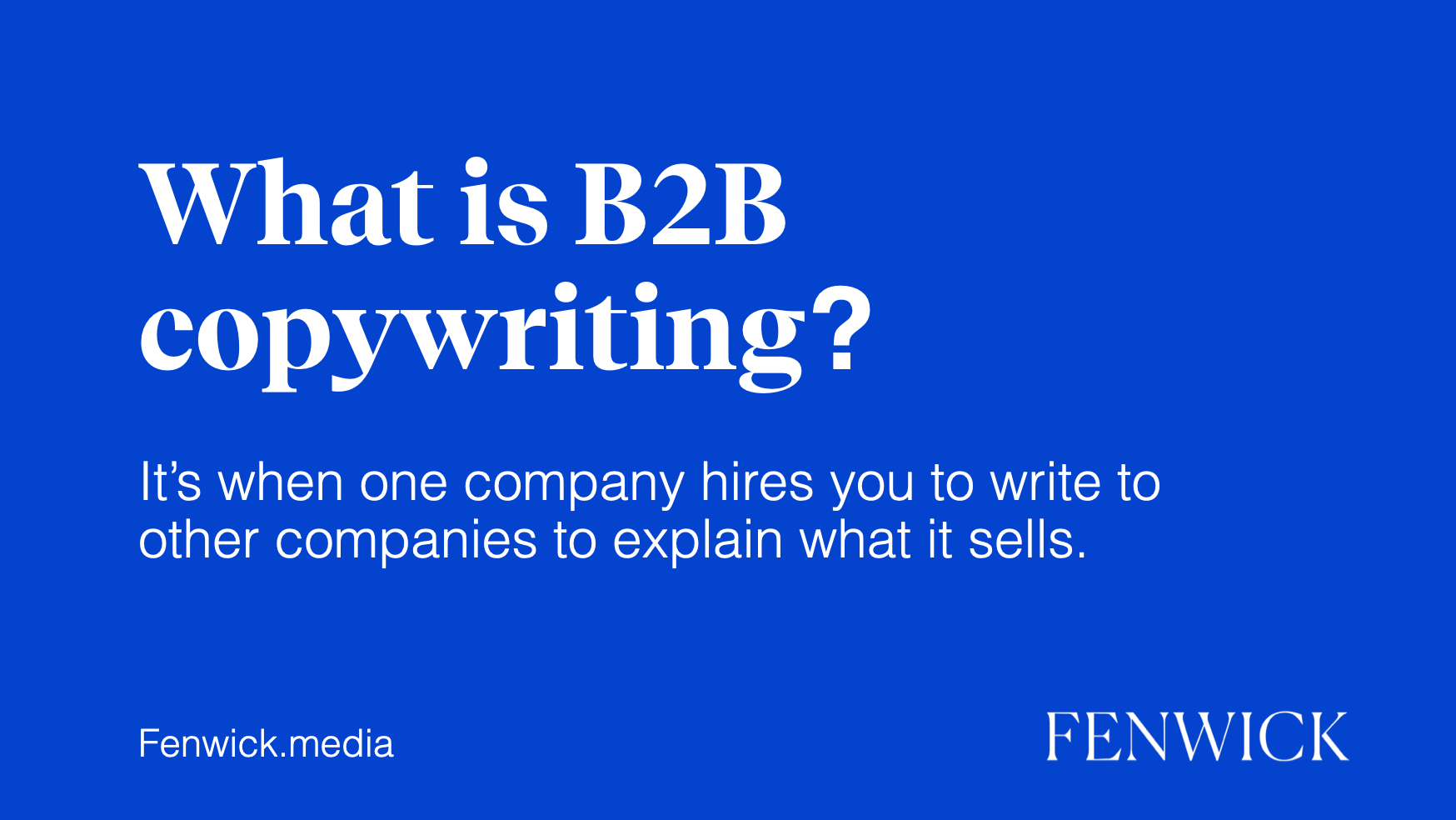The many purposes of B2B copywriting
Every B2B writing project begins with a ‘why’—companies want to create copy or “content” to fulfill specific goals. Here are some of the most common ones:
1. Generate awareness
A lot of B2B copy is geared toward the early stages of the buyer’s journey (or the top of the sales funnel, if you prefer). This is the phase in which a potential buyer has recognized they have a problem and are starting to think about possible solutions.
Writers create copy for this stage to help brands generate awareness among potentially interested buyers. This might mean writing copy for social media advertisements or SEO web pages which answer a question that people commonly type into search engines (you may have caught on that this post is one of them). It might also mean creating blog posts and other content that helps a brand establish itself as a trusted source of advice, or an executive as a thought leader in an industry.
The idea is to educate readers about the problems they are facing and entice them to learn more about a solution, one of which may be the company’s products.
Examples:
2. Attract leads
Another kind of B2B copy that’s in high demand is content directed at potential buyers—known as “leads” in marketing speak—who are interested in a brand but are still weighing their options. The goal of this kind of writing is to inform readers about a product and persuade them it’s a good fit for their needs. These types of content are often long-form anchor pieces such as e-books and guides paired with short-form e-newsletters and emails to promote it.
Examples:
3. Close deals
B2B copywriters also support sales teams by creating content they can use in conversations with prospective customers. These resources might take the form of slide decks, white papers, or success stories from existing customers—really any kind of content that can help a prospect make a final decision to buy. While a well-written and persuasive slide deck won’t necessarily make a deal, a presentation riddled with errors can certainly break one, so this kind of writing is vitally important.
Examples:
4. Create an exceptional customer experience
The need for compelling B2B copy doesn’t end when a customer decides to buy—in fact, that’s just the beginning. Businesses need UX writers to obsess over precise word choice that makes their websites or software simple and intuitive to navigate.
Brands also use B2B writers to create documentation that allows users to understand and utilize their products effectively. For instance, brands employ technical writers to create manuals, write user guides, and FAQ sections in a way that’s searchable, digestible, and reader-friendly.
Examples:
What makes good B2B copywriting?
The qualities of good B2B copywriting are similar to any other kind of good writing. The best B2B blogs are concise, persuasive, and even witty. But B2B readers also look for other qualities that you might not find in, say, a news article or a page-turning novel. An Edelman-LinkedIn study investigated what C-suite executives and other decision-makers want to see in the thought leadership content produced by other companies—here are some of their top choices:
1. Industry insights
Approximately 78 percent of decision-makers and C-level executives say the most successful thought leadership they consume discusses industry-specific challenges and trends.
2. Digestible format
Approximately 69 percent of decision-makers and C-suite executives prefer short-form content and around 65 percent want to see content that provides data points, charts, infographics, or other figures.
3. Relevant and applicable advice
Sixty-three percent of both decision-makers and C-suite executives look for content relevant to projects they are currently working on.
Start writing B2B copy
The most exciting part about B2B copywriting? Right now, it’s a huge opportunity for freelancers. B2B companies are clamoring for writers who can communicate what they offer to the world in a clear, compelling way. And they’re willing to pay for it.
For more B2B writing strategies, read our ideal content process (with a diagram).




